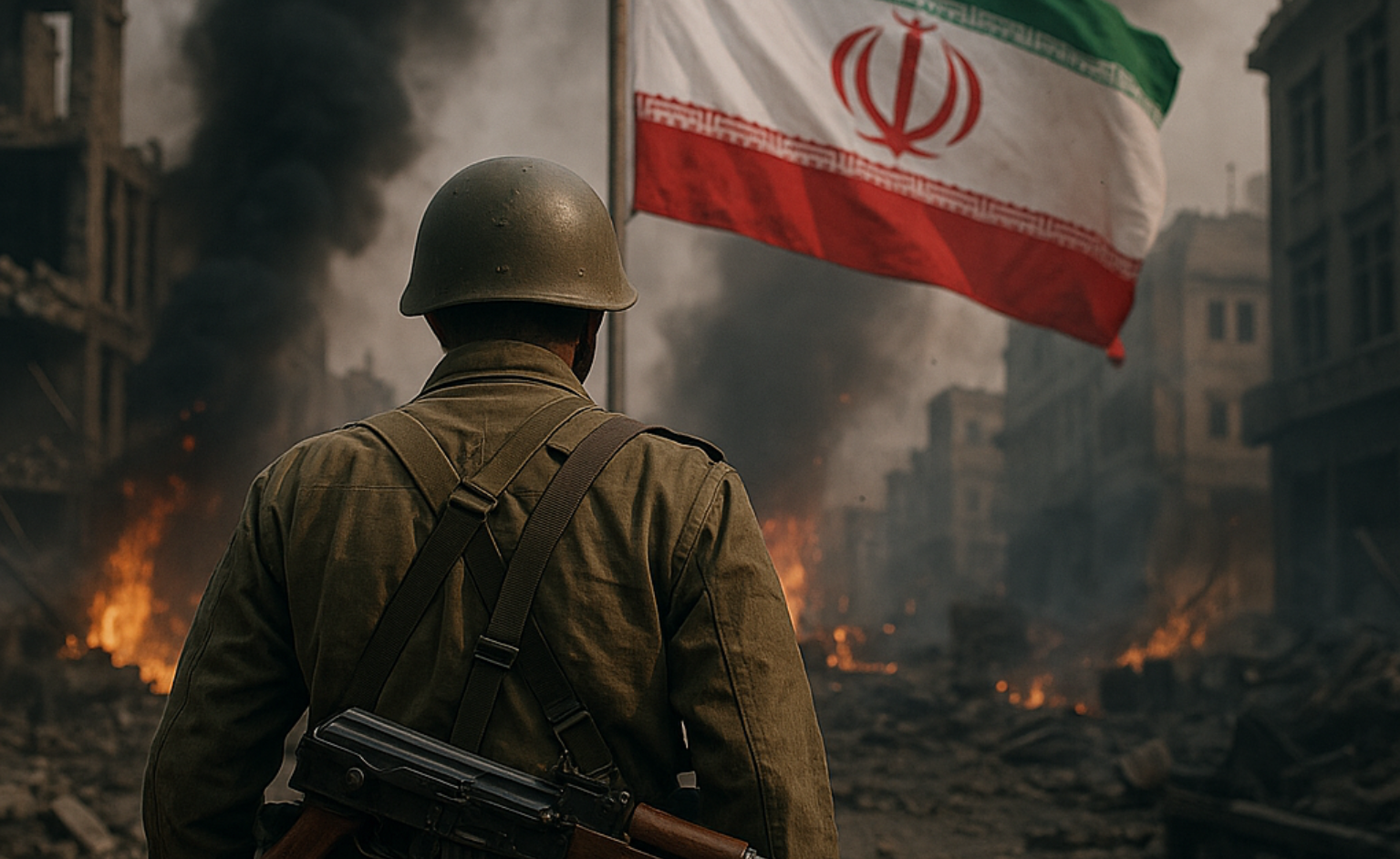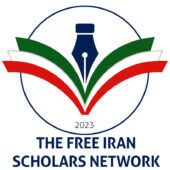An FISN Research Report by: By Professor Matthew Tasooji, Ph.D., California State University San Marcos — Scholar of Economics, Management, and Iranian Political Affairs
July 29, 2025

Abstract
This article explores the Islamic Republic of Iran’s recurring use of diversionary conflict as a strategy for regime survival during periods of internal crisis. By analyzing the eight-year Iran–Iraq War under Ayatollah Khomeini and the more recent 12-Day War (2024), the article assesses whether such military engagements still function as sustainable instruments of regime legitimacy or whether they now accelerate internal decay. Drawing on the diversionary theory of war and recent economic data, the article evaluates the mounting social and economic costs of Iran’s militarized responses. It argues that these tactics, once effective, now yield diminishing political returns in a more politically aware and digitally connected society.
Introduction: Diversionary Conflict in Authoritarian Regimes
Authoritarian regimes have long resorted to external conflicts as a means to distract from domestic turmoil. This phenomenon is widely studied in political science as the diversionary theory of war [1][2]. According to this theory, embattled leaders initiate or escalate foreign conflicts to consolidate internal unity, generate nationalistic fervor, and suppress dissent.
The Islamic Republic of Iran presents a particularly vivid case study. Over the past four decades, the regime has invoked military confrontation during moments of economic collapse, political unrest, and legitimacy crises. This paper investigates Iran’s past and present use of diversionary conflict, focusing on two major instances:
- The protracted Iran–Iraq War (1980–1988)
- The more recent 12-Day War of 2024, widely interpreted as a deliberate escalation during intense domestic pressure
The Iran–Iraq War: The Original Diversionary Template
While the Iran–Iraq War began with Saddam Hussein’s invasion in 1980, Iran’s decision to extend the war beyond 1982—after the recapture of Khorramshahr—lacked clear strategic necessity. Instead, it offered significant political utility:
- Suppressed internal dissent by framing critics as “traitors to the revolution” [3]
- Consolidated clerical power by militarizing governance and society [4]
- Cultivated a national identity rooted in martyrdom, sacrifice, and religious duty [5]
The economic and human costs were staggering:
- Over 500,000 dead or injured
- Billions of dollars in infrastructure damage
- Eight lost years of post-revolution reconstruction
Despite the toll, the war entrenched the regime ideologically and institutionally. It created a model that later regimes would seek to replicate.
The 12-Day War: Echoes of a Strategy in Decline
In January 2024, the Islamic Republic engaged in a 12-day military escalation targeting U.S. assets in Iraq and Kurdish militia positions in northern Syria. The attacks were widely viewed as a diversionary response to:
- Nationwide protests following the December 2023 fuel price hikes [6]
- Soaring inflation and the collapse of public services [7]
- Increased internal criticism from both reformists and loyalists [4]
The regime sought to:
- Redirect public anger outward
- Generate a “rally-’round-the-flag” effect [8]
- Regain narrative control on the regional stage
However, the attempt largely backfired:
- The conflict triggered international sanctions, deepening economic distress.
- On social media, Iranians ridiculed the regime’s theatrics and exposed the hollow nature of its military claims [9].
- Even some segments within the IRGC and Basij appeared reluctant to endorse escalation, reflecting institutional fatigue [5].
This case illustrates a diminishing return on a once-effective tactic.
Economic and Social Costs: The Erosion of Viability
The 2024 conflict compounded existing economic woes. Key indicators include:
- Unemployment: Rose from 10.6% to 13.5%, with youth unemployment surpassing 25% [10]
- Inflation: Exceeded 55% in essential sectors like food and medicine [11]
- Currency devaluation: The Rial fell from 450,000 [7] to over 940,000 per USD on the open market
- Foreign reserves: Fell below $10 billion, severely limiting import capacity and economic stabilization efforts [6]
These numbers reflect not only the collapse of fiscal resilience but also diminishing public tolerance for military adventurism under the guise of national defense [12].
Limits of the Diversionary Doctrine in the Current Era
Several factors now constrain the regime’s ability to use war as a unifying force.
Information Transparency
Widespread access to social media platforms like X (Twitter), Instagram, and Telegram allows citizens to quickly debunk state narratives. Citizen journalists and diaspora media amplify counter-narratives and undermine government propaganda in real-time [13][9].
Civil Society Evolution
Iran’s urban population is more politically literate, skeptical, and mobilized than in the 1980s [14]. The martyrdom rhetoric that once galvanized millions now meets cynicism and resistance.
Institutional Fatigue and Internal Fracture
There is growing evidence of disillusionment within the regime’s own apparatus:
- Some senior clerics have distanced themselves from war rhetoric.
- IRGC-affiliated economists and technocrats have privately warned about the unsustainability of militarized governance [4].
- Veteran forces increasingly question the logic of repeated military entanglements that yield no strategic gain.
Conclusion: A Strategy Past Its Prime
While diversionary conflict once provided the Islamic Republic with a means to preserve power and deflect dissent, today’s geopolitical, economic, and social environment renders it increasingly ineffective and potentially self-destructive.
Rather than restoring legitimacy, modern military adventures:
- Drain financial resources
- Alienate the population
- Accelerate elite fragmentation
- Invite further international isolation
In the absence of domestic reform and accountable governance, such tactics may no longer delay collapse. They may hasten it.
References
[1] Levy, J. S. (1989). The diversionary theory of war: A critique. In M. Midlarsky (Ed.), The internationalization of communal strife (pp. 118–146). Routledge.
[2] Oakes, A. R. (2012). Diversionary war: Domestic unrest and international conflict. Stanford University Press.
[3] Keddie, N. R. (2006). Modern Iran: Roots and results of revolution. Yale University Press.
[4] Eisenstadt, M. (2016). The strategic culture of the Islamic Republic of Iran: Operational and policy implications. The Washington Institute for Near East Policy.
[5] Alfoneh, A. (2010). Iran unveiled: How the Revolutionary Guards is transforming Iran from theocracy into military dictatorship. AEI Press.
[6] World Bank. (2024). Iran economic monitor: Weathering the storm. https://worldbank.org
[7] International Monetary Fund (IMF). (2024). Islamic Republic of Iran: Country report No. 24/105. https://imf.org
[8] Fordham, B. O. (2002). Another look at “rally ’round the flag”: Partisan rallying and presidential approval following foreign policy crises. Foreign Policy Analysis, 28(4), 293–309.
[9] Atlantic Council DFRLab. (2023). #IranProtests: Disinformation and narrative war in Persian social media. https://dfrlab.org
[10] Statistical Center of Iran (SCI). (2023). Key labor market indicators. https://amar.org.ir
[11] Central Bank of Iran (CBI). (2023). Monthly economic bulletin. https://cbi.ir
[12] Salehi-Isfahani, D. (2020). The demographics of economic crisis in Iran. Brookings Institution. https://brookings.edu
[13] Tufekci, Z. (2017). Twitter and tear gas: The power and fragility of networked protest. Yale University Press.
[14] Gheytanchi, E. (2009). Iran’s reform movement: Civil society and the press under authoritarianism. Sociological Forum, 24(1), 49–71.
